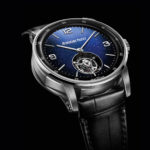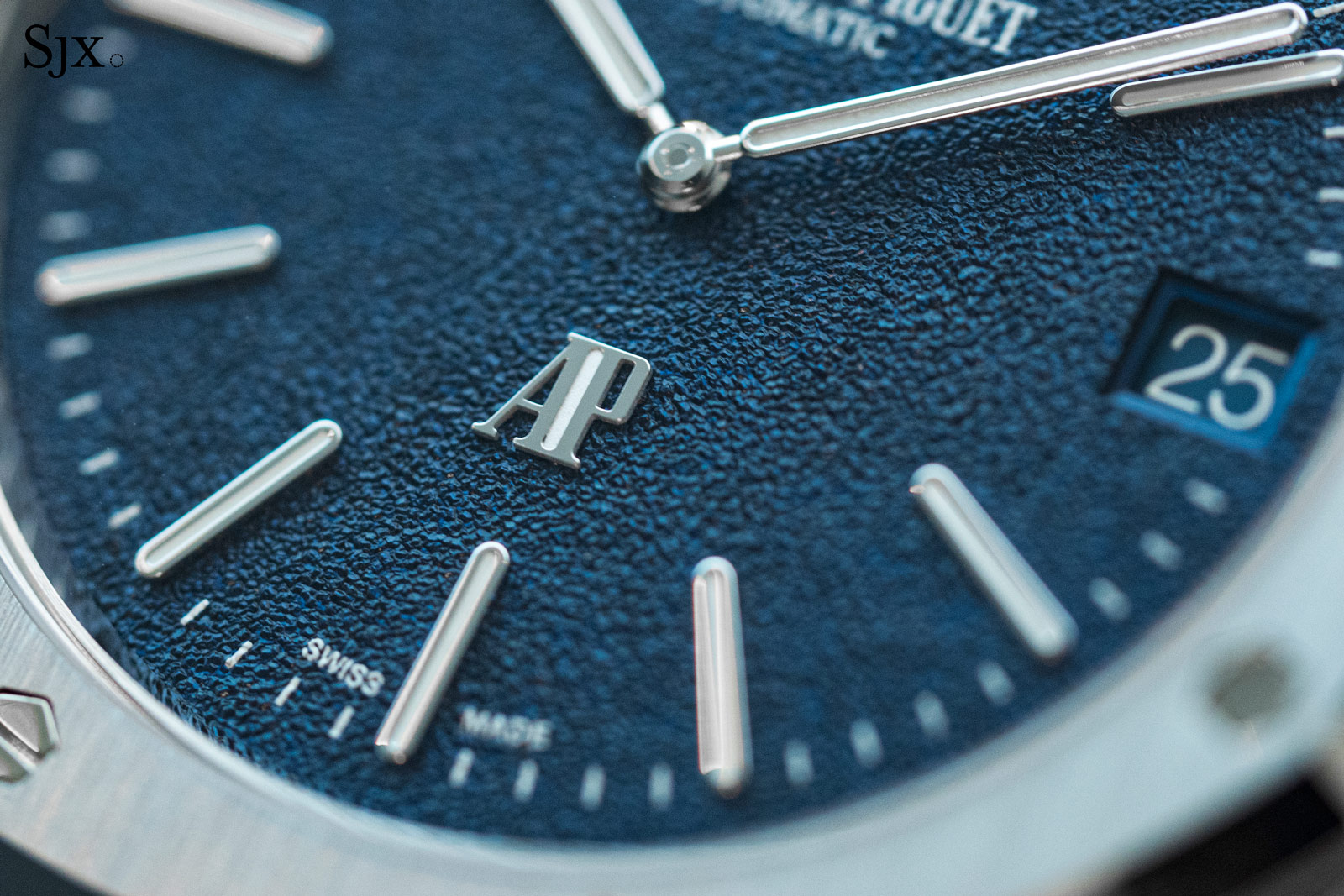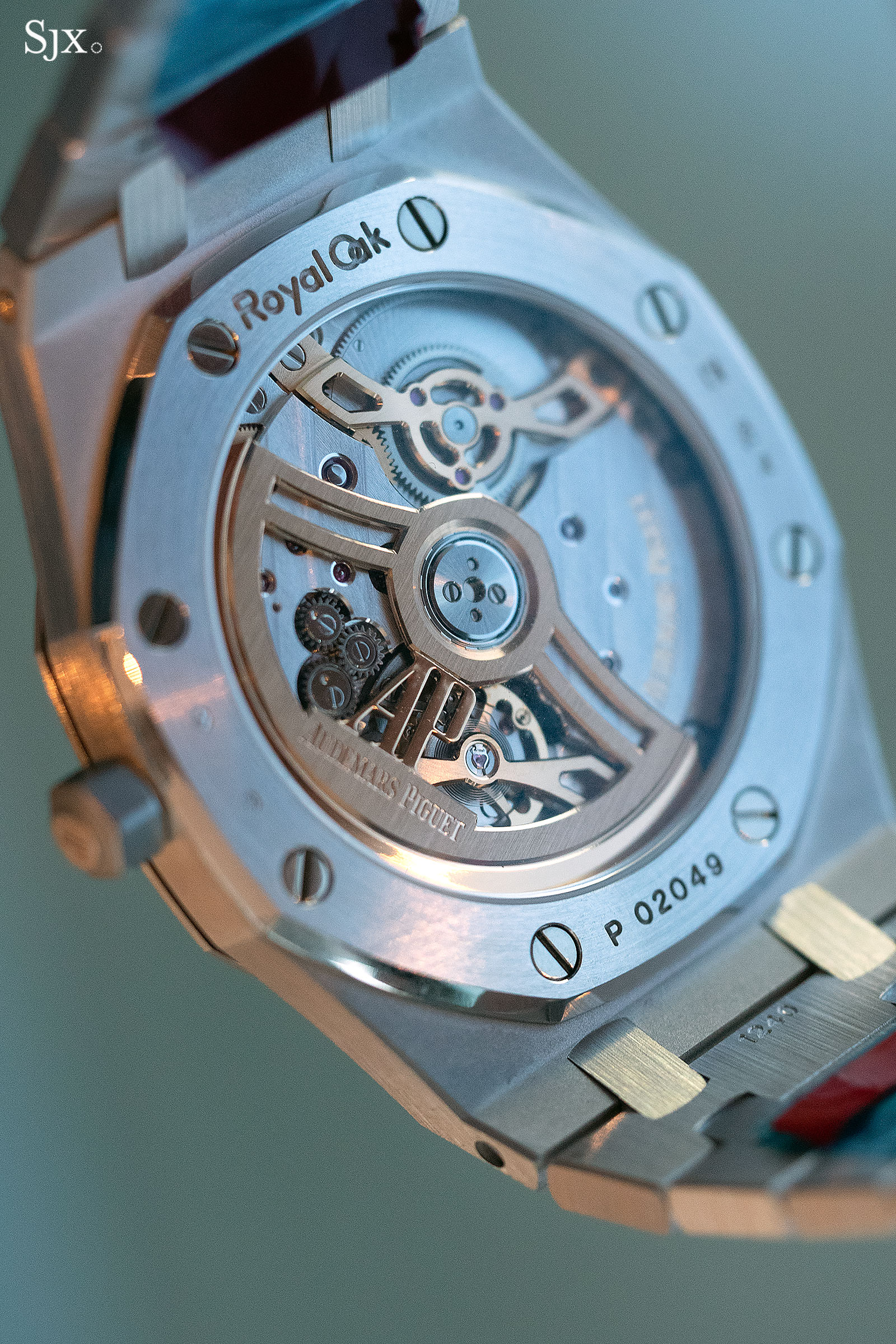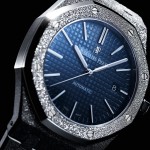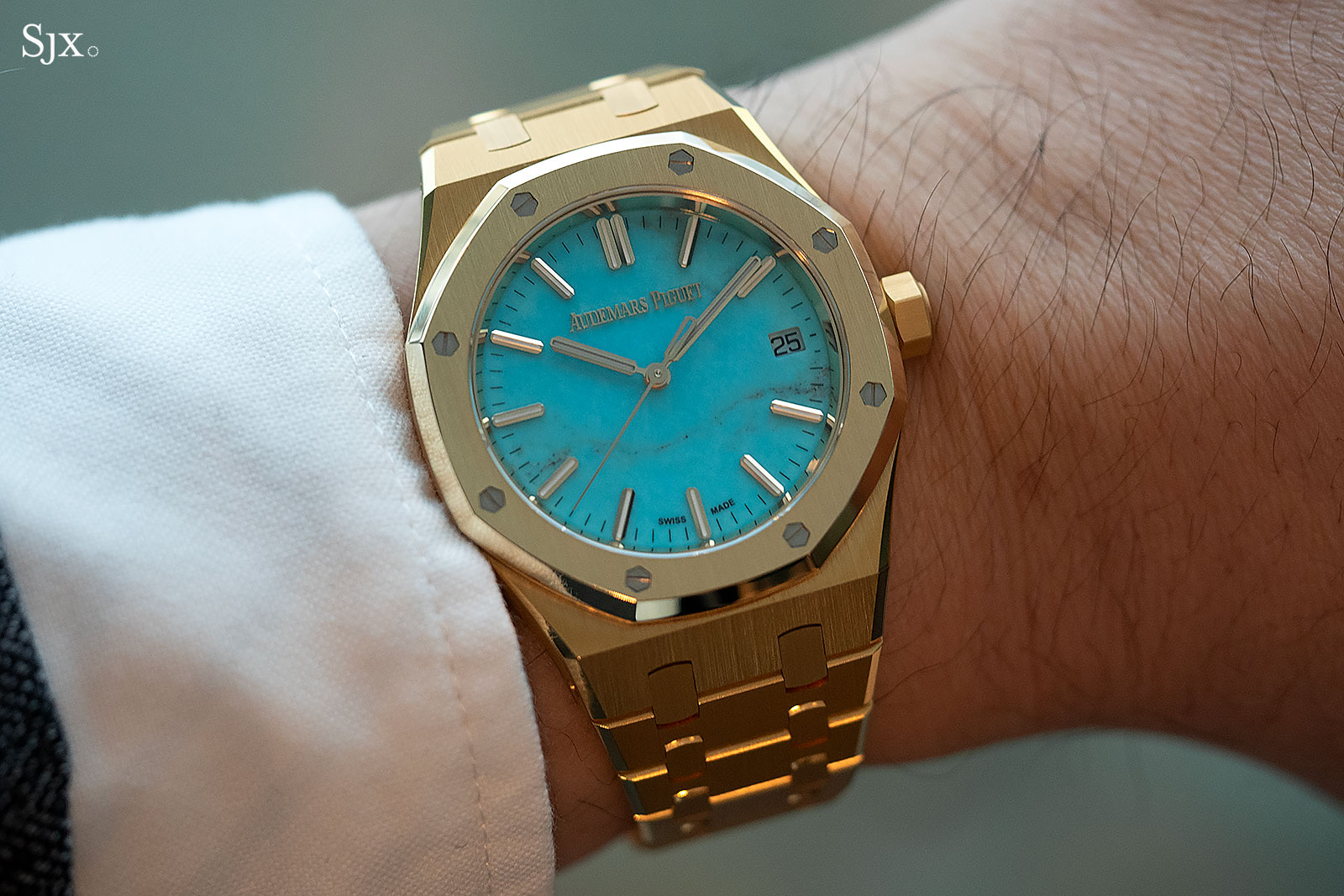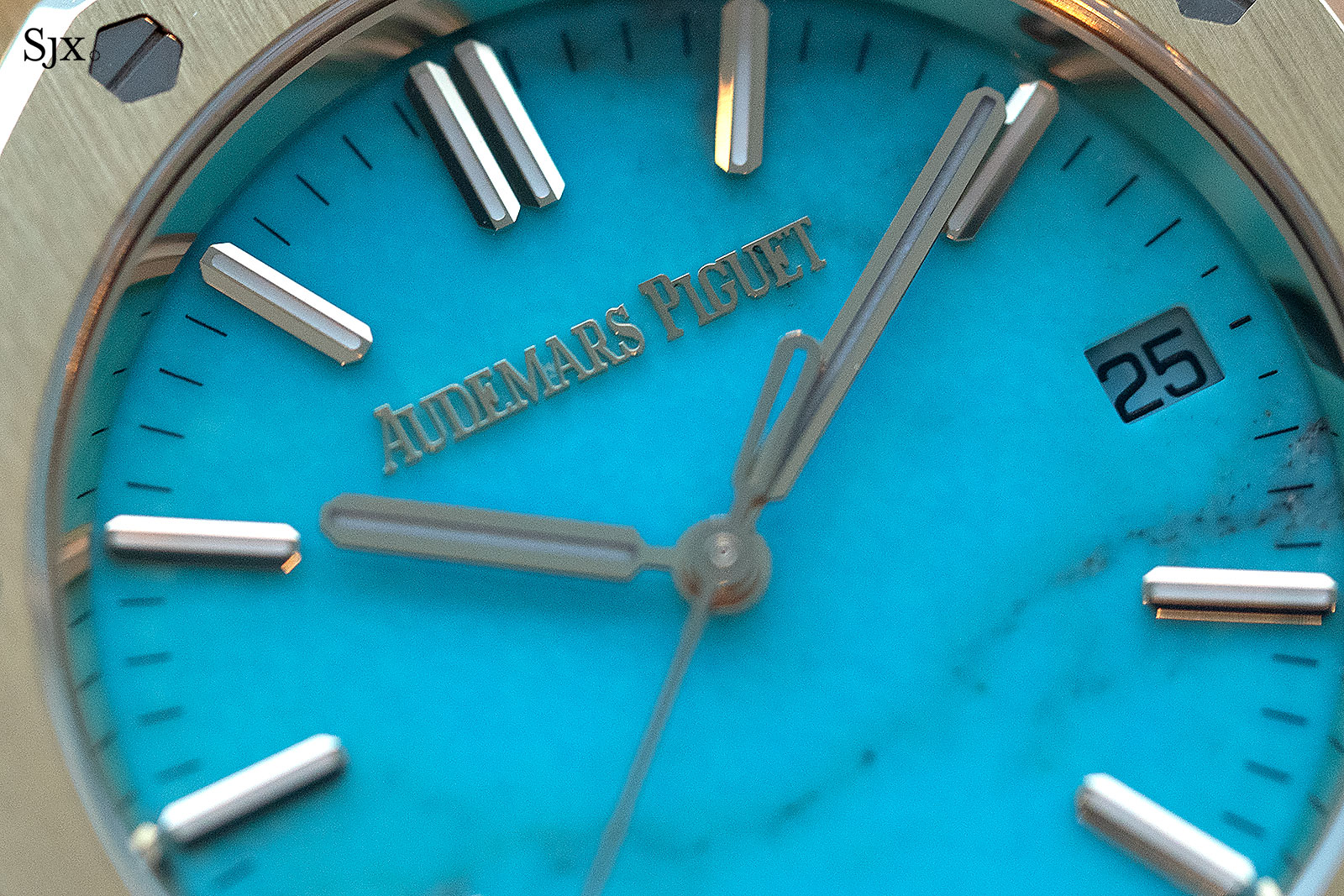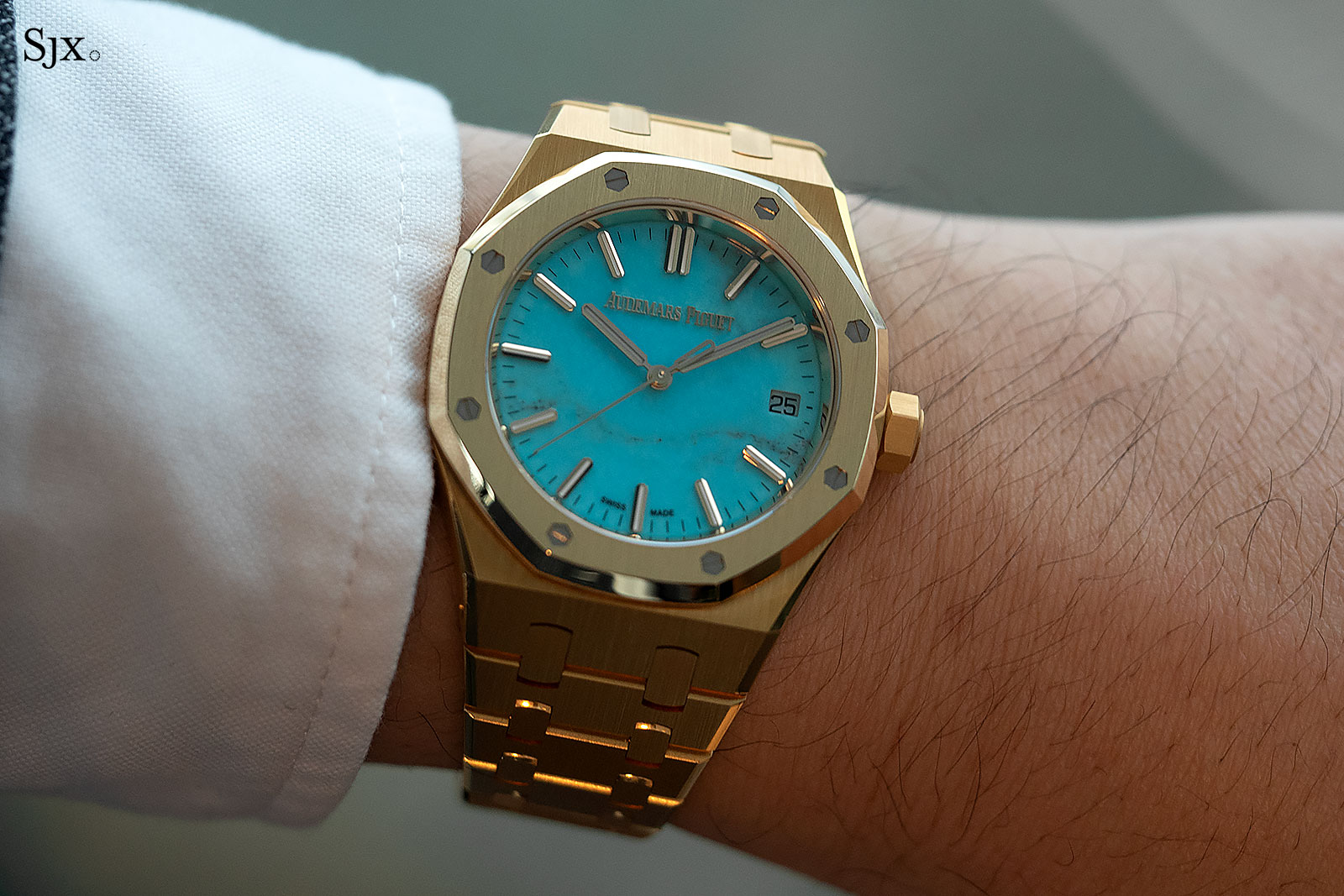Hands On: Audemars Piguet Code 11.59 in Stainless Steel
With stamped guilloché dials.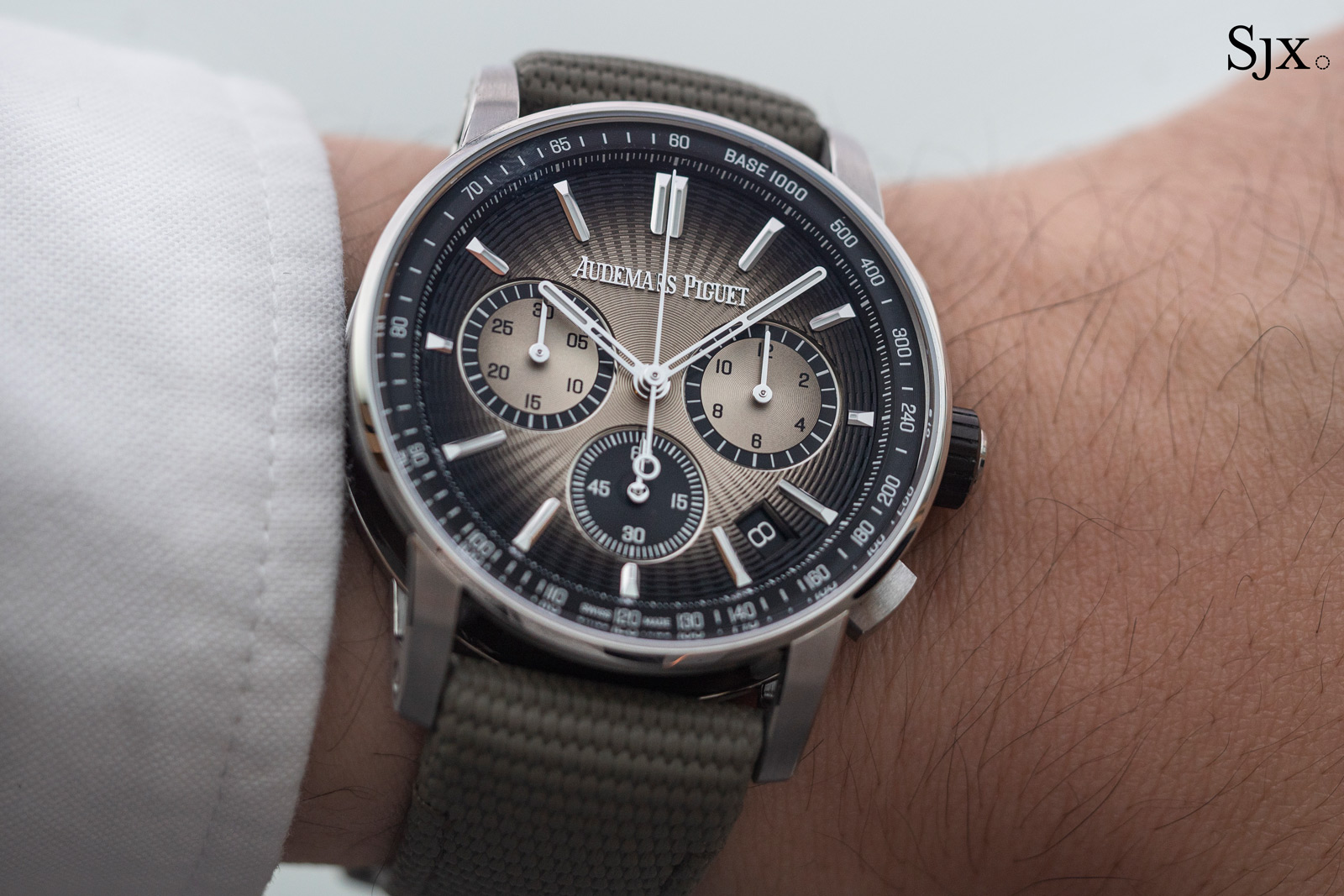
At its release in 2019, the Code 11.59 by Audemars Piguet created lots of buzz – some of it for the wrong reasons, with the design being panned as uninspiring. But Audemars Piguet (AP) stuck with the model and swiftly tweaked the formula, resulting in watches that were better received, including the recent Code 11.59 by Audemars Piguet Starwheel.
Now the base models have received a facelift that does away with the plain dials of the originals, replacing them with a finely-patterned stamped dial. Available as either a chronograph or three-hander, the new Code 11.59 by Audemars Piguet is also in stainless steel, making it (slightly) more accessible.
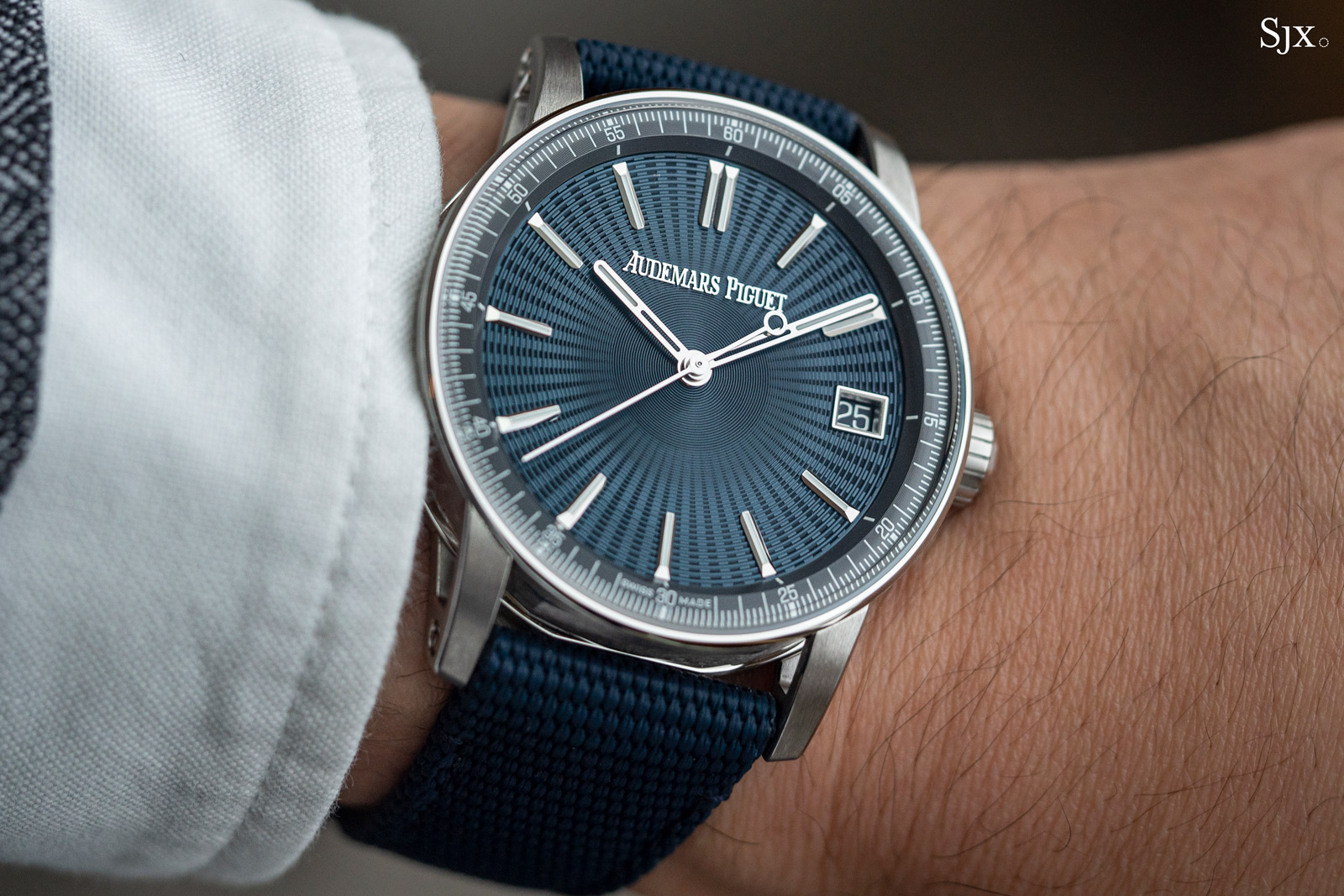
Initial thoughts
The redesigned Code 11.59 is certainly more appealing than the original, with the dial giving it a level of visual detail absent from its predecessor. Fans of the original will like the new Code 11.59, and those on the fence will probably be persuaded as well. But anyone who disliked the original will not be swayed since it is essentially the same watch but in new attire.
Although the dials are stamped, they offer a surprising level of detail. The pattern is intricate enough that I thought they were engraved with a CNC machine when I first saw them.

The “smoked beige” dial

And the one in blue
To go with the new dial are redesigned hands and hour markers. Gone are the plain baton hands and markers with Arabic quarters, they have been replaced by baton hands and markers with more detail. The markers are facetted while the hands are partially open worked, and both feature luminous filling.
Though slightly more modern than before, the new hands and markers are still slightly retro from a distance. I would have preferred a more pronounced, contemporary design to go with the distinctly modern case.
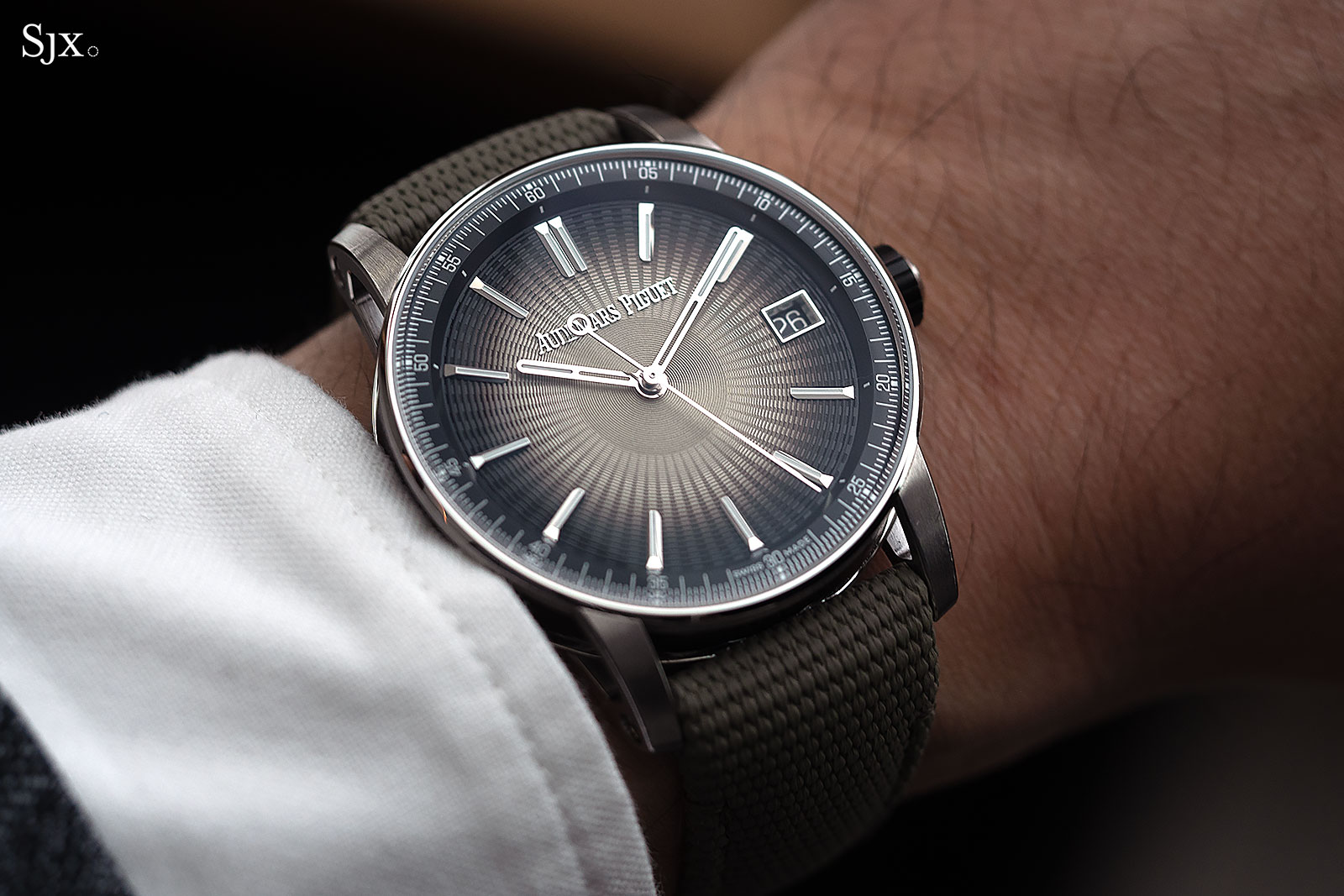
The new Code 11.59 makes it debut with a fairly compact line-up of just six references made up of two models, each in three dial colours.
While the blue and green dials are pleasing, they are quite conventional. The “smoked beige” dial, on the other hand, stands out for being unusual yet handsome. Plus it is the only variant with a ceramic case middle; the rest are entirely steel.
Starting at CHF21,000 for the three-hander and CHF29,000 for the chronograph, the new Code 11.59 is the most affordable mechanical AP watch. The Code 11.59 compares well against equivalent offerings from Patek Philippe and Vacheron Constantin – basically the best in terms of industrial-luxury – both in terms of pricing as well as quality. But the design will likely continue to be polarising, though not quite as drastically as before.

The new Code 11.59 line up. Image – Audemars Piguet
Stamped guilloche
AP recruited Yann von Kaenel, the guillocheur who runs Décors Guillochés in Neuchatel, for the production of the new dials. Specialising in traditional engine turning, Mr von Kaenel created the dies for the stamping process via traditional methods, namely engraving via a hand-operated straight-line engine.
His traditional guilloche dies are then used to stamp the serially-produced dials of the Code 11.59, explaining the unexpectedly fine patterning that resembles a basketweave. According to AP, this level of detail would not be possible with stamping that relies on a conventionally produced die.
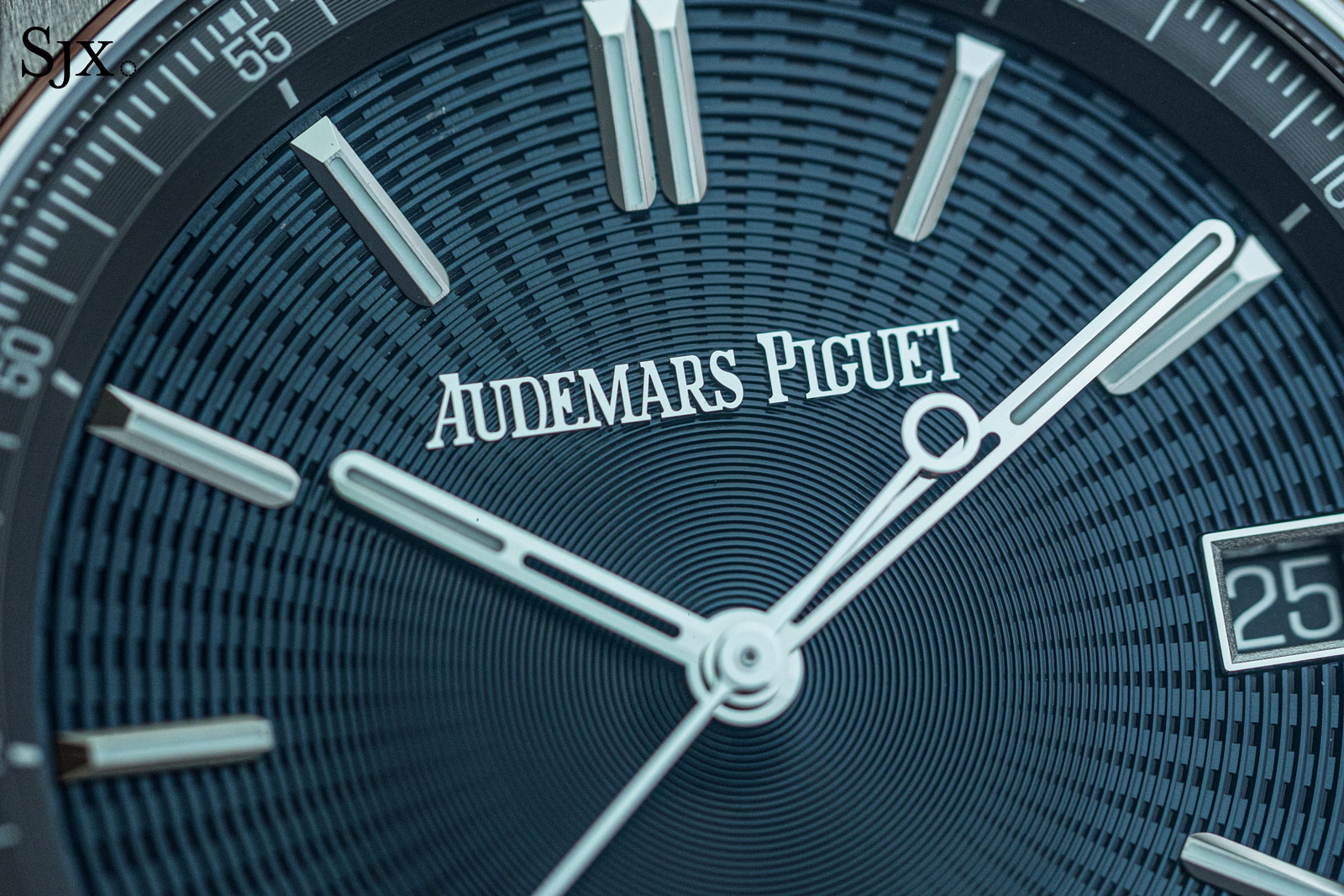

The stamped dials are then treated to create the resulting colours. The blue and green dials are achieved with PVD, increasingly the treatment of choice for metallic finishes. Notably, the blue dial is exactly the same shade “bleu nuit, nuage 50” (which translates as “night blue, cloud 50”) as found on the classic Royal Oak “Jumbo” ref. 16202.
But the standout “smoke beige”, on the other hand, is done with galvanic treatment, first to create the base colour and then with an additional step for the dark shading on the edges.

Stamped guilloche aside, a few other details about the dial are noteworthy. While the case is now steel, the new dials still feature hour markers and hands in 18k white gold.
And the date display has a disc in a complementary colour so that it isn’t too distracting. That said, the three-hand model outlines the date with a frame, making it more prominent, perhaps unnecessarily so.
Finally, the redesign also adds a second scale graduated in fractions of a second, giving the face a slightly more functional, instrument-like appearance that goes well with the case styling.
A first in steel
In a first for the model, the new offerings are entirely in steel, save for the “smoked beige” that gets a fancier combination of steel and ceramic. This gives the new models an easy lightness on the wrist.
The rest of the watch is identical to the earlier Code 11.59 models, save for the crown. It’s been redesigned to have softer edges, as well as shallower but more numerous fluting for better grip.

The case retains the sandwich-like construction that characterises the model. It’s essentially a bezel and back containing an octagonal case middle. This modular approach allows for easy variation in the case materials, as done with the “smoked beige” models that features a black ceramic middle.
And the case continues to incorporate the novel lug construction where the open-worked lugs are only welded to be bezel and gently rest on the case back. The complex approach to the case results in an impressively nuanced finish with lots of contrasting surfaces and detail, but one which also brings lots of dust trapped in obscure crevices.

The steel-and-ceramic case of the “smoked beige” dial
Mechanically the new Code 11.59 models are unchanged. The three-hand is still powered by the cal. 4302, while the chronograph contains the cal. 4401.
Both are derived from the same basic architecture that underpins AP’s latest-generation workhorse movement for its larger-diameter watches. They have all the features expected of a modern, high-end calibre, including a free-sprung balance and a long, 70-hour power reserve.

The cal. 4401 chronograph movement
Key facts and price
Code 11.59 by Audemars Piguet Selfwinding 41 mm
Ref. 15210ST.OO.A343KB.01 (blue)
Ref. 15210ST.OO.A056KB.01 (green)
Ref. 15210QT.OO.A064KB.01 (smoked beige)
Diameter: 41 mm
Height: 10.7 mm
Material: Steel; or black ceramic and steel
Crystal: Sapphire
Water resistance: 30 m
Movement: Cal. 4302
Functions: Hours, minutes, centre seconds and date
Winding: Automatic
Frequency: 28,800 beats per hour (4 Hz)
Power reserve: 70 hours
Strap: Rubber-backed leather strap with pin buckle
Limited edition: No
Availability: At AP Houses and boutiques
Price: CHF21,000 for blue or green dials, CHF23,000 for smoked beige (prices exclude taxes)
Code 11.59 by Audemars Piguet Selfwinding Chronograph 41 mm
Ref. 26393ST.OO.A343KB.01 (bleu nuit, nuage 50)
Ref. 26393ST.OO.A056KB.01 (green)
Ref. 26393QT.OO.A064KB.01 (smoked beige)
Diameter: 41 mm
Height: 12.6 mm
Material: Steel; or black ceramic and steel
Crystal: Sapphire
Water resistance: 30 m
Movement: Cal. 4401
Functions: Flyback chronograph, hours, minutes, small seconds, and date
Winding: Automatic
Frequency: 28,800 beats per hour (4 Hz)
Power reserve: 70 hours
Strap: Rubber-backed leather strap with pin buckle
Limited edition: No
Availability: At AP Houses and boutiques
Price: CHF29,000 for blue or green; CHF31,000 for smoked beige (prices exclude taxes)
For more, visit Audemarspiguet.com.
Back to top.

